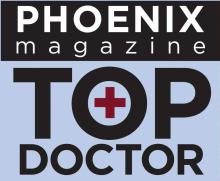Unfortunately, over the years the media has twisted the truth about narcolepsy so most people do not truly understand this sleep disorder. It is one of the many sleep disorders diagnosed and treated at The Insomnia and Sleep Institute of Arizona, the Face of Sleep Medicine in the Phoenix area and home to the “Top Doc” for 5 consecutive years. The reality is that narcolepsy is a chronic neurological disorder that impacts how the brain controls our sleep-wake cycles.
Some people with narcolepsy might feel well-rested when they wake up, but then feel extremely sleepy throughout the day. Others report interrupted and unbalanced sleep so that they wake up throughout the night. There is no singular experience or description that will fit every patient with narcolepsy, but there is a common thread: this is a sleep disorder that negatively affects your daily life.
Do People with Narcolepsy Really Fall Asleep Anywhere?
This is one of the biggest misnomers about narcolepsy that is exaggerated in films and television, but the answer is this: sometimes. Narcolepsy is not a one size fits all sleep disorder. It is very rare for someone with narcolepsy to uncontrollably fall asleep while doing something very active such as having a lively conversation or running. It is much more common for someone with narcolepsy to fall asleep when they are already in a non-stimulating environment, such as during monotonous desk work.
Others with narcolepsy present with acute muscle weakness that causes cataplexy (inability to move), limpness, or even hallucinations that can be compared to dreams. Some people with narcolepsy experience paralysis right before falling asleep or immediately after waking up. As you can see, narcolepsy is a complex and individualized sleep disorder.
A Disrupted Sleep Cycle and Narcolepsy
For someone without a sleep disorder, they enter rapid eye movement (REM) about 60 – 90 minutes after falling asleep. This is when dreams occur and the brain ensures muscles are relaxed, making sleepwalking nearly impossible (otherwise, it is possible a person will physically act out their dreams). Those with narcolepsy enter REM much quicker, oftentimes within 15 minutes of falling asleep. This means that narcolepsy patients can have that brain-induced muscle weakness while they are awake.
It is important to get diagnosed with narcolepsy by a sleep specialist so that treatment can commence—and treatment is available. Otherwise, undiagnosed and untreated narcolepsy can dramatically get in the way of typical social, cognitive, and psychological function as well as development. It is possible that every facet of your life will be challenged if narcolepsy is not addressed. In worse case scenarios, narcolepsy can even be life threatening, exacerbating chronic diseases or putting the individual in dangerous situations.
Who is at High Risk of Narcolepsy?
Both females and males can be diagnosed with narcolepsy, and symptoms typically start before the age of 25. However, narcolepsy can develop at any time. Between 135,000 – 200,000 people in the U.S. alone are estimated to have narcolepsy, but it is important to remember that this sleep disorder often goes undiagnosed or misdiagnosed—sometimes for a lifetime. You need a sleep specialist to diagnose narcolepsy, as this is not something your primary care provider is usually equipped to diagnose or treat.
Every patient is unique, so there is no one size fits all list of narcolepsy symptoms to check off. However, there are some commonalities to consider if you think you or someone in your home has this sleep disorder. Typically, symptoms worsen as a person ages. Some of the telltale signs include extreme daytime sleepiness, hallucinations, sleep paralysis, and cataplexy. Virtually every person with narcolepsy has severe daytime sleepiness, but just 10 – 25 percent of those will also report all additional symptoms.
Help for Narcolepsy
There are two primary types of narcolepsy, and both are diagnosed and treated at The Insomnia and Sleep Institute. Type 1 is diagnosed when a person is low on the brain hormone hypocretin or has cataplexy coupled with daytime sleepiness. Type 2 patients have excessive sleepiness without muscle weakness. There is secondary narcolepsy, which can occur after a brain injury.
If you are concerned about potential narcolepsy or any sleep disorder, get in contact with The Insomnia and Sleep Institute today. Complete the online form or call the center at (480) 745-3547.





